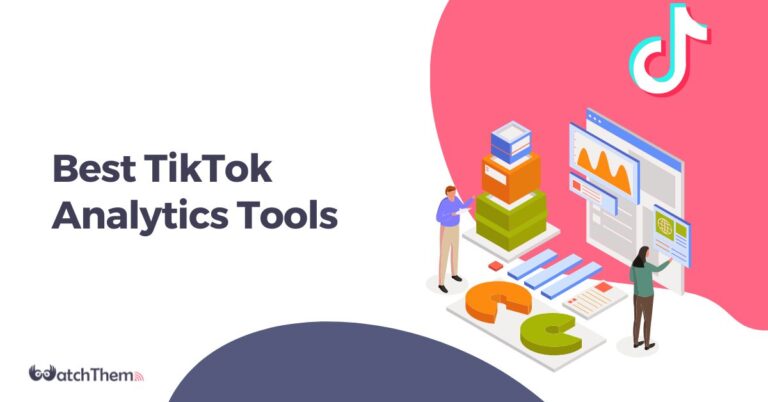Page Contents
With over 1 billion active users, TikTok has become one of the best platforms for marketers looking to connect with younger audiences. Whether you want to analyze TikTokers for your next influencer marketing plan or just enhance your performance, you should learn to analyze engagement metrics, which is possible by using TikTok Analytics tools.
In this comprehensive guide, we will help you find TikTok analytics for influencers and measure the success of your brand marketing campaigns.
In this post, we’ll cover everything from the most important engagement metrics to look out for to the best tools for analyzing TikTok data. So whether you’re a seasoned marketer or just starting out, get ready to take your TikTok game to the next level!
What is TikTok Analytics and Why Does It Matter?
To grow your TikTok presence and have a successful collaboration with influencers, you need data, which is known as engagement metrics. This data can show you how many people have seen your post, liked it, or engaged with it. That’s the same when you want to analyze the performance of a TikToker.
All this process is called TikTok analytics. Although TikTok Insight will give you enough data about your performance, using TikTok analytics tools can help you look through your performance and know your audience with more details.
Analyzing your TikTok performance is important because this data can lead you to create better content that suits your target audience. Furthermore, these tools can help you identify trends and optimize your content strategy for better engagement and growth.
Ultimately, with TikTok analytics tools, you can analyze TikTok influencers’ performance to discover which one is a better option for your next influencer marketing campaign.
Pro Tip: If you want to automate your content creation, there are many automation software for content creation that you can use for your website and social media.
What Are the Important Metrics to Track on TikTok?
The most important metrics to analyze when evaluating TikTok campaign performance are:
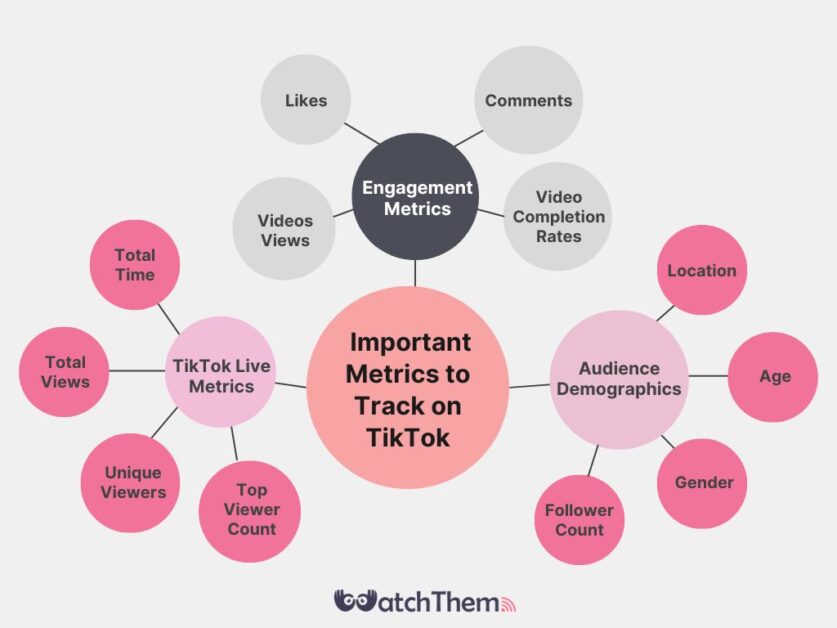

Engagement Metrics:
- Likes, comments, shares, and video completion rates. These metrics can show you what type of content your audience likes more.
- Videos views by region. This metric can help you find in which locations you are more popular.
- Overall engagement rate, which indicates how well the content resonates with your audience.
Audience Demographics:
- Follower count, location, age, and gender to ensure alignment with your target customers.
- Net new followers that show how many new followers you have and how many you have lost.
- Follower activity can help you find the best time to post on TikTok. This metric displays when most of your followers are active and will engage with your content.
TikTok Live Metrics
- Total time. This metric can tell you how many hours you have hosted a live video.
- Total views. If you want to ensure your live videos are effective, you should check this metric to see how many people have viewed your live video.
- Unique viewers are the number of viewers that have watched your Live once.
- Top viewer count can tell you who your top followers are who have watched your live more than others.
Note: If you occasionally go live on social media, it will help if you learn about securing your live streaming and increase your account’s protection.
What are Some Key Features to Look for in a TikTok Analytics Tool?
Here are some key features to look for in a TikTok analytics tool:
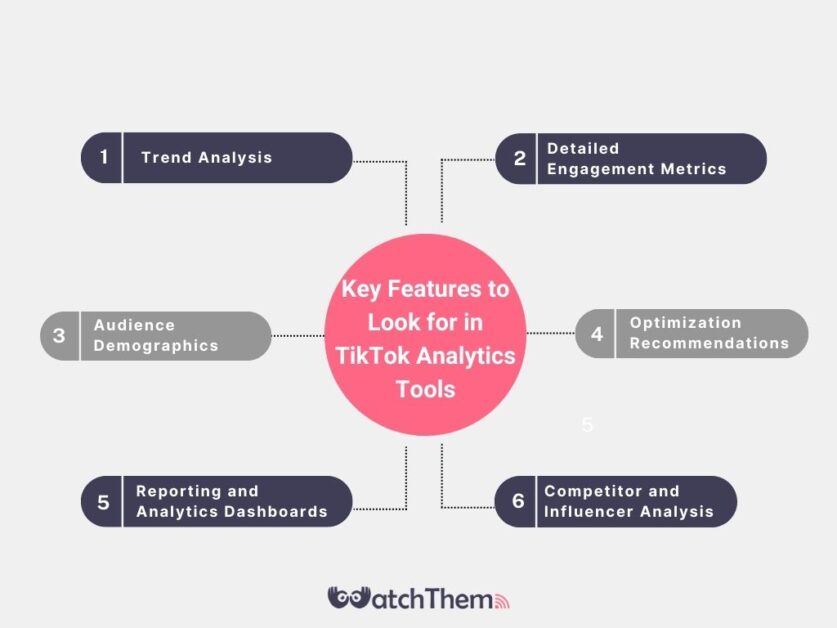

- Trend Analysis: A good TikTok analytics tool should be able to identify and track trending topics, including music and hashtags. This allows you to stay on top of the latest trends and create more engaging content.
- Detailed Engagement Metrics: Comprehensive metrics like views, likes, comments, shares, and engagement rate (both by view and by follower). These metrics provide insights into how your content is performing.
- Audience Demographics: Insights into the age, gender, location, and other demographics of your TikTok followers and viewers, which will help you understand your target audience and optimize your content accordingly.
- Reporting and Analytics Dashboards: TikTok analytics tools should have visually appealing dashboards so that you can easily understand how well you are performing on this platform. Furthermore, it would be a good idea to export data and generate your own customized report.
- Competitor and Influencer Analysis: Look for a TikTok analytics tool that can give you insights into the content, engagement, and audience of your competitors.
- Optimization Recommendations: Suggestions on the best times to post, trending hashtags to use, and content formats to try.
By looking for these key features, you can find a TikTok analytics tool that provides detailed data and insights needed to effectively measure, optimize, and grow your presence on the platform.
Top TikTok Analytics Tools
The following tools can help you analyze data on TikTok and enhance your presence on this platform.
1. TikTok Analytics (Native Tool):
Like other platforms, TikTok has a built-in analytics tool that provides insights into engagement metrics like views, likes, comments, shares, and follower growth. To access this tool, you can go to the TikTok Creator Center, enter your username, and log in.
Then you will be able to see how well your posts have been viewed. TikTok’s built-in analytics allows you to download this data in a .CSV or .XLSX files. Therefore, you can combine this report with any other report you get from other tools and create a comprehensive report about your TikTok performance.
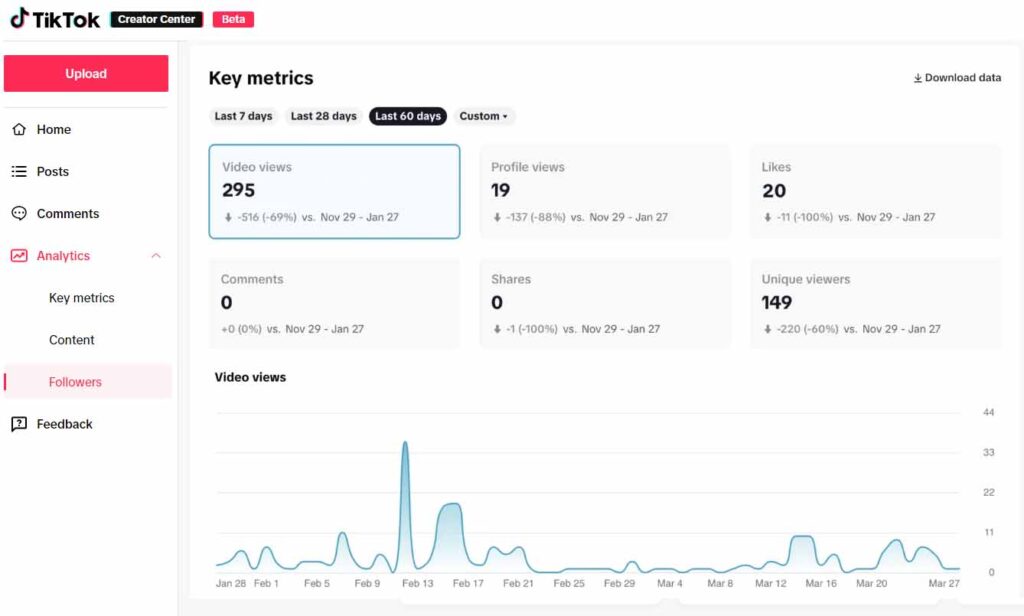

2. Rival IQ
Whether you want to analyze TikTok or Instagram, Rival IQ can provide you with a comprehensive report, including engagement by topics, best posting times, hashtag usage, and competitor analysis.
Furthermore, it allows you to compare two TikTok accounts. Therefore, you can compare your account with your competitor to see which one is performing better. The report will be sent to your email.
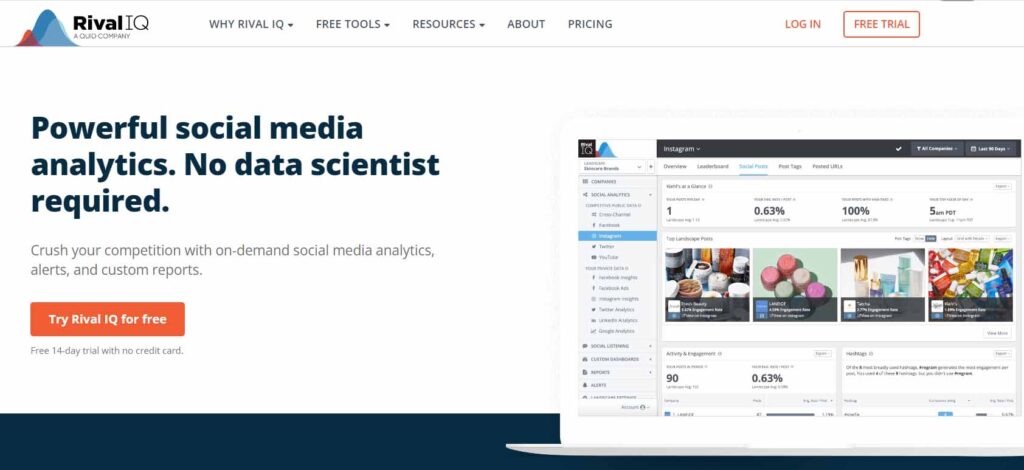

3. HypeAuditor
An all-in-one TikTok analytics tool that provides engagement rate, follower growth, content performance, and audience demographics. This TikTok analytics tool helps brands and influencers manage influencer marketing campaigns and optimize their TikTok presence.
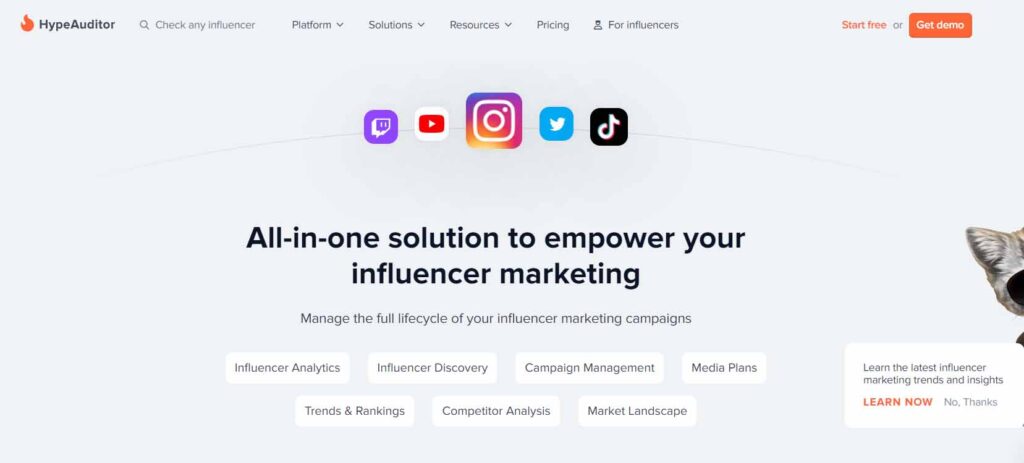

4. Pentos
It’s a budget-friendly TikTok analytics tool focused on tracking profile metrics, post’s performance, trending tracks, and hashtags. Small businesses and creators can easily use its dashboard for customizable and automated reporting.
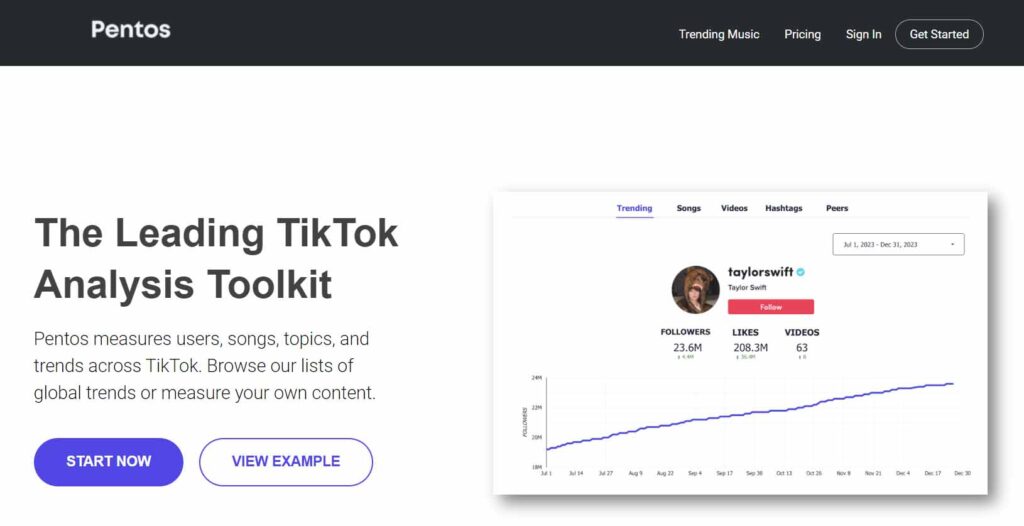

5. Countik
A free TikTok analytics tool that allows you to analyze any TikTok profile, including engagement rate, follower count, and video performance. Countik is useful for competitive analysis and benchmarking your content against others in your industry.
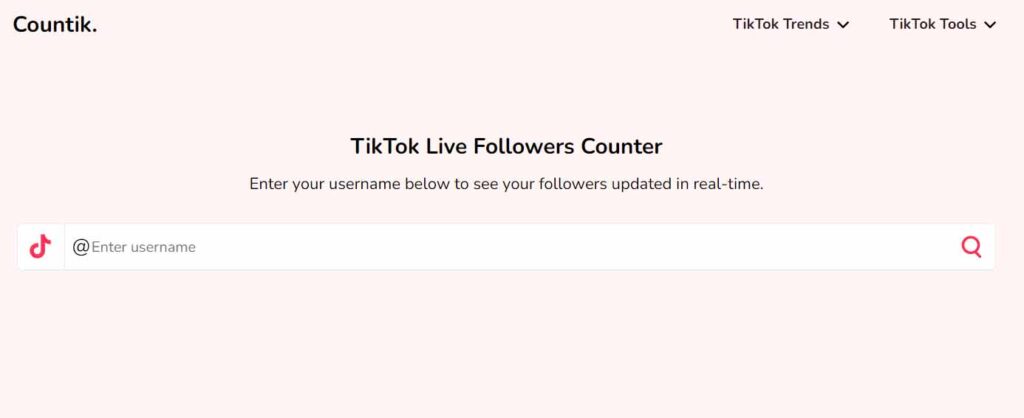

By using these TikTok analytics tools, you can gain valuable insights to optimize your content, improve engagement, and grow your audience on the platform.
How to Analyze TikTok Influencers?
So far, we have learned to use TikTok analytics tools to evaluate our campaign performance. But what if you want to collaborate with an influencer? How can you evaluate their performance? Here are some tricks that can help you analyze TikTok influencers.
Analyze Engagement Metrics
- Look at the influencer’s number of followers, likes, comments, and shares to identify creators with an active and engaged audience.
- Pay attention to the influencer’s video completion rates, as TikTok’s algorithm favors content that keeps users watching.
- Assess the influencer’s overall engagement rate, which indicates how well their content resonates with their audience.
Evaluate Content Quality
- Review the influencer’s recent videos to understand their content style, tone, and the type of videos that perform best.
- Ensure the influencer’s content aligns with your brand’s values, target audience, and marketing goals.
- Look for creators who have a unique personality and can produce creative, entertaining, and engaging videos.
Analyze Audience Demographics
- Examine the influencer’s audience demographics, such as location, age, and gender to ensure they match your target customers.
- Use tools like Storyclash to get detailed insights into the influencer’s audience composition.
Consider Broader Social Presence
- Assess the influencer’s presence and performance on other social media platforms like Instagram and YouTube to get a more complete picture of their reach and influence.
Utilize Search and Discovery Tools
- Use TikTok’s native search and discovery features, as well as third-party tools like Promoty and InfluenceGrid, to find relevant influencers for your brand.
By following these steps, you can effectively analyze TikTok influencers and identify the ones that are the best fit for your brand’s marketing campaigns.
Furthermore, you should note that it’s essential to evaluate the content quality of influencers to ensure they can create engaging content for your brand.
Pro Tip: If you want to collaborate with top TikTok influencers, you can easily join Ainfluencer for free and reach a list of top influencers in different categories.
Ainfluencer is a free influencer marketing platform that connects brands and influencers in the easiest and quickest way. Don’t hesitate to try Ainfluencer for your next TikTok campaign.
FAQs
You may still have questions about TikTok analytics tools. Here are the frequently asked questions on this topic:
Q1. How to Interpret Engagement Metrics on TikTok?
By closely monitoring and interpreting these key TikTok engagement metrics, brands and creators can gain valuable insights to improve their content strategy and grow their presence on the platform.
- Engagement Rate by View: This metric measures the average number of engagements (likes, comments, shares) per video view. It provides insight into how compelling and engaging the content is for viewers. A higher engagement rate by view indicates the content is interesting to the audience.
- Engagement Rate by Follower: This metric measures the average number of engagements per follower on a per-video basis. Engagement rate by followers tends to be higher for accounts with more followers, but smaller accounts can still achieve strong engagement rates.
- Other Engagement Metrics: Total likes, comments, shares, and video views are also important to track. These metrics provide insights into the overall reach and interaction with the content.
Q2. What is the Difference Between Engagement Rate and Engagement Metrics on TikTok?
Engagement metrics refer to the raw numbers of likes, comments, shares, views, and other interactions on TikTok videos. They will provide insights into the overall reach and interaction with the content but do not account for audience size.
On the other hand, engagement rate is a calculated metric that measures the level of interaction a TikTok video or account receives relative to its audience size. It is typically calculated as (total engagements/number of followers or views) x 100 to get a percentage.
Q3. What Are the Best Practices for Analyzing TikTok Engagement Metrics?
Here are some best practices for analyzing TikTok engagement metrics:
- Focus on Engagement Rate, Not Just Raw Engagement Metrics.
- Track Engagement Rate by View and by Follower.
- Benchmark Against Industry Averages and Competitors.
- Analyze Engagement Trends Over Time.
- Use TikTok Analytics Tools and Third-Party Apps to Evaluate Your Performance.
Bottom Line
You will not gain success if you are not able to analyze data in your industry. If TikTok is an important online marketing channel for your business, learn more about evaluating your performance and comparing your brand with competitors on this platform. Using TikTok analytics tools can simplify the process of data collecting and reporting.

